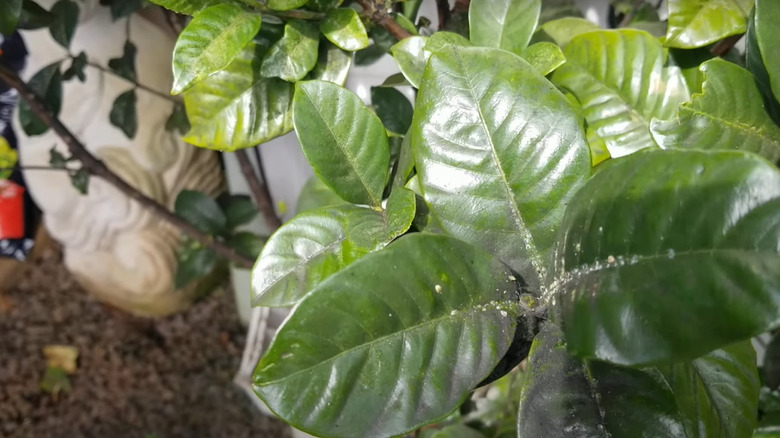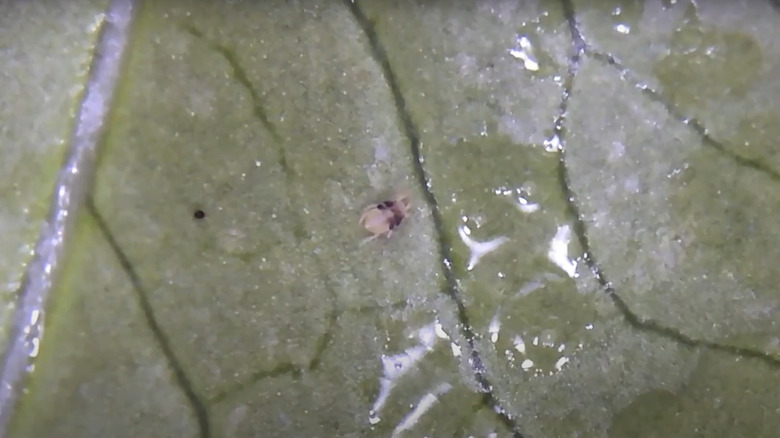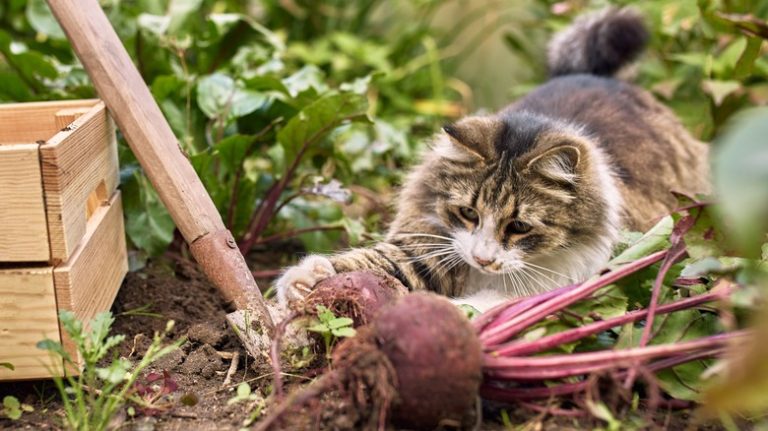Gardenia’s satiny white aromatic inflorescence has many wrapped around its petals. Unfortunately, like gardeners, pests find them irresistible, harboring in the flowers and foliage every chance they get, damaging and destroying them. Aphids, particularly their melon (Aphis gossypii) and green peach (Myzus persicae) varieties, gorge on these ornamentals since they prefer young, sweet flowers. While they aren’t concerning in small clusters, the problem balloons when they multiply over time. Around spring, these tiny, tear-shaped, yellowish-green insects puncture new leaves with their filiform mouths to drink the sap, cutting the foliage’s growth short and leaving it disfigured or wilted. They also house various plant viruses.
When extremely severe, these plant lice force the fruits to ripen prematurely and lace the reduced output in their discarded skins and honeydew. As ants find the sugary substance attractive, they jump on the new blooms. This lends the aphids another defense layer while leaving the gardeners with a headache. Another taker of the aphid’s dew residue, sooty mold fungi worsens matters and leaves a black, velvety film. The lone green side to the equation is that the fungi don’t kill the plant tissue and merely leave the gardenias unsightly. But if they’re left on too long, they’ll inhibit photosynthesis, predisposing the plant to other diseases and pests.
Whiteflies, scales, thrips, and spider mites are common culprits

Home Gardening Support Network Channel/YouTube
Sooty mold isn’t just an aphid accompaniment and features in white flies (Dialeurodes citri) but also scale insects’ infestations because they produce honeydew, too. The damage is similar, with the foliage bronzing and dying untimely. But if you notice milky white, moth-like creatures scuttering away on the undersides on shaking the infected plants, know citrus whiteflies are in action. However, an early infestation appears as unmoving, 1.5-millimeters long, light-green scales on the leaves’ bases.
In contrast, if relatively bigger — around 6 millimeters wide — white globules are noticeable on the ornamental’s stems and shoots, they’re most likely a sign of Japanese wax scales (Ceroplastes japonicus) rather than a gardenia disease. But if the blobs appear like elongated egg sacs, then cotton cushion scales (Icerya purchasi) are at play. After sapping all juices, these soft-bodied pests cause leaf drop, branch kill, and poor flowering.
Additionally, flower thrips (Frankliniella tritici) are harder to find because of their microscopic size. Their presence is felt in flowers that prematurely transform into unappealing, malformed browns, withering swiftly—assuming the buds bloom. Moreover, you may notice reddish-purple spots on the curled leaves’ bottoms. Conversely, if the spots appear yellowish-white and show signs of webbing, your gardenia may be attacked by a twospotted spider mite (Tetranychus urticae). They’ll soon cover your shrubbery in webs, making it look unseemly. The new foliage will grow disfigured.
Dealing with the pest problem

Ag Science TV/YouTube
Luckily, you can employ multiple ways to nip the pesky problem in the bud. If you catch the aphids early on, simply wash them off with water and repeat the process as necessary. Similarly, remove the infested branches to get rid of scales on plants. If the problem escalates, use biological control. Ladybugs, green lacewings, and parasitic wasps naturally take care of all gardenia pests. However, they don’t overwinter and must be reintroduced when spring sets in. Get rid of the ant accomplices by placing baits along their garden trails between the gardenia plants. Alternatively, wrap the shrubbery with fabric or duct tape and coat it with sticky substances to capture the roaming ants. Mix the material every week to prevent debris buildup.
When the pest problem becomes acute, affecting almost 80 to 90% of the leaves, opt for eco-friendly, insecticidal soaps and sprays or horticultural oils. For the highest impact, soak your woody plants deeply to ensure insect contact. Carry out the activity only when the temperatures are under 90 degrees Fahrenheit and the chances of rain the next day are minimal. As these foliar treatments can burn the foliage, use them in the evening after watering the gardenias deeply the day before. Reapply the insecticide at least three times at a gap of five to seven days. For long-lasting results, apply slow-release dinotefuran or imidacloprid insecticides to the soil before the growth season.



